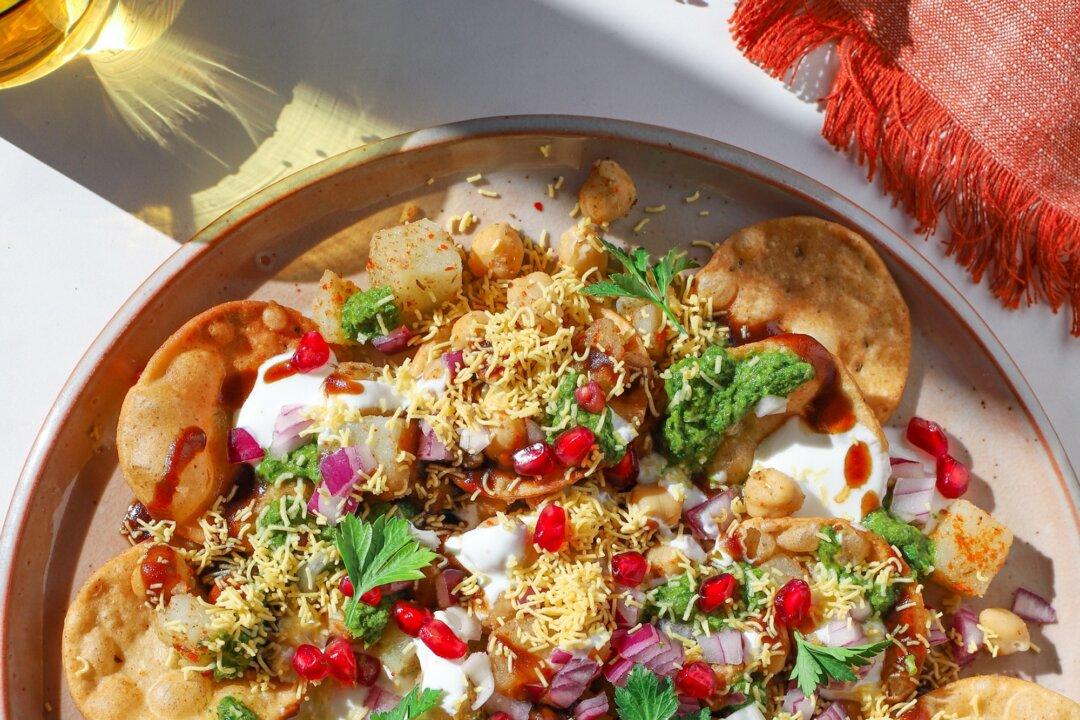Chaat—derived from the Hindi word chaatna, which translates as “to lick” or “to taste”—is a popular category of street food found in stalls, carts, and food malls across South Asia. It is characterized by an array of flavors and textures: salty, sour, sweet, tangy, creamy, crispy, and crunchy. Papdi chaat, also known as papri chaat, is one of the most beloved forms of chaat across India, Bangladesh, Nepal, and Pakistan, as well as the South Asian diaspora.
What is Papdi Chaat?
Papdi chaat varies from country to country, from region to region, and even between food stalls. Despite any differences, the base of every version starts with a layer of papdi—fried cracker-like rounds often flavored with ajwain (carom) seeds. From there, it’s topped with fluffy boiled potatoes, tender chickpeas, or a mix of the two, which are seasoned with chaat masala, an umami-rich spice blend that gets its signature funky tang from amchur (green mango powder) and black salt (aka kala namak).
What Is Papdi Made Out Of?
Papdi is made from all-purpose flour, whole-wheat flour, salt, ajwain (carom) seeds, canola oil, and water. The ingredients are mixed together to form a dough, which is rolled out into thin rounds, then fried until crispy and golden-brown.
Papdi Chaat Toppings
It wouldn’t be chaat without a bevy of toppings! This combination of flavors and textures goes down easy with a piping-hot cup of chai or an ice-cold beer.
- Fluffy potatoes and tender chickpeas seasoned with chaat masala, a savory spice blend.
- Plain full-fat yogurt adds a cooling, creamy element.
- Spicy green chutney is a bright blend of fresh cilantro, mint, serrano peppers, and lime juice.
- Tamarind date chutney is flavored with jaggery (or light brown sugar), Kashmiri chili powder, cumin seeds, and lime. Make sure to buy tamarind concentrate and not tamarind pulp, which contains seeds.
- Crunchy sev are fried chickpea noodles.
- Red onion, pomegranate seeds, and cilantro add crisp, fresh flavor.
Papdi Chaat
Makes about 28 papdi; serves 4
For the Papdi





